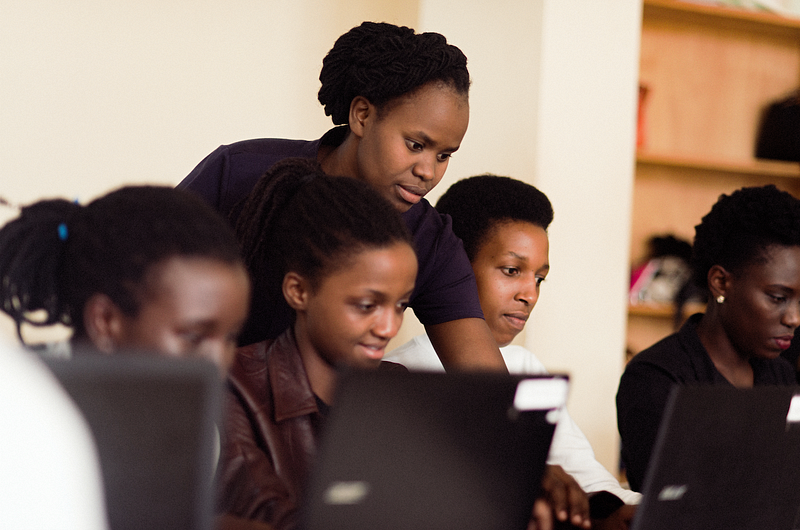If you are an educator, you might have heard about student-centered learning. Even if you are not, you probably have. In the last few decades, significant attention has been given to the need to centre the student within the learning process. Student-centred learning advocates that learning should be centred around student’s needs, knowledge, interests and ideas. In the classroom, student-centred learning looks like students’ ideas guiding learning, i.e., making space for students to share their ideas. It is at the heart of the move to rethink teachers as facilitators who concern themselves more with providing environments that foster students’ ideas than simply telling them what to know.
A lot of research and advocacy has been done and is currently being done for the need to adopt a student-centred approach (or learner-centred approach as some people call it) in Nigerian and African education. These advocates argued that our education has been teacher-focused for far too long, advancing the teacher as a sole source of knowledge; thereby alienating the ability of the students to develop their critical skills. I hold a similar sentiment.
So much work has been done about this that I would not have thought it necessary to reinvent the wheel by writing an article on the same topic, but for an experience, I had sitting in a university classroom in an African University in mid-2023. I was in the class as a Researcher to observe how instructional engagement looks like in practice between higher educators and their students in African University classrooms. It was there that I found a concerning approach to student-centred learning. The university is strongly committed to student-centred learning, with the teacher acting as a facilitator whose work is to get students to share their ideas. It was arguably the best case of a university’s commitment to this kind of learning I had ever witnessed.
In that class, the teacher did share his own knowledge, but he spent more time leading the class with questions to get the students to share their ideas. However, as a researcher who works on responsive teaching, a specialized form of student-centred teaching, I became concerned at some point in the classroom. My concern is best described with the scenario described below:
Advertisement
The teacher had posed a question where the students had to pick positions. Some students stood on the affirmative side, some on the dissenting side, while a few stood on the fence. About 2 or 3 of them shared a short vignette to defend their positions. I was on the edge of my seat! For researchers of responsive teaching, encountering differing opinions within classrooms was great research fodder. It is a good place to see how students deepen their capacity for thought by engaging in critical thinking, problem-solving, and decision-making. Addressing and analyzing diverse opinions is also a good place to see how educators support students through this process. I was waiting for how this was going to play out. I already imagined this would prompt a good “argument” in the class and get the students to engage with each other’s thoughts deeper. Then it happened. The teacher thanked them for sharing their thoughts, technically agreed with all of them and moved on to the next question.
I was awestruck. How can the teacher simply move on from this? How does he not see this as a great opportunity to get students doing the intellectual work of refining and re-analyzing their ideas in the light of differing opinions? Those questions bothered me as I sat in that class. In fact, my stomach participated in this mental stress.
It took some time to think through my observation in the entire class to realize what had happened: The teacher likely saw student-centred learning as simply about getting students to share ideas. I suspected he might have believed student-centred learning is about providing environments that encourage student sharing solely by always agreeing with them and being “nice”. That made sense to me. I had seen it play out a couple of times in other observations. It portrays student-centred learning as just involving students in discussions and giving them talking space within the classroom.
Advertisement
I beg to differ. I do not believe it is enough to only draw out ideas from students and call that student-centred learning. What happens after students share their ideas? What is done with the shared ideas is just as crucial to student-centred learning as getting them to share. The understanding of student-centred learning needs to go beyond just getting students sharing ideas to having both teachers and students engaging with these ideas in a productive way.
This is at the heart of responsive teaching and should be at the heart of student-centered learning too. Intellectual engagement—the act of wrestling with ideas—should be just as important as getting students to share. Our thoughts are deepened and refined when they are engaged with, and that might sometimes even mean the need for our thoughts to be challenged. The classroom is not only meant to be a wonderful place where students get to say what they feel and think, it should also be a place where students are challenged to thoroughly think through their thoughts, opinions, and analysis. That is real intellectual development. That is the gift educators should give students in classrooms, especially in higher institutions classrooms. That is student-centered learning.
Oluwatoyin is a Doctoral Researcher in STEM Education, Social Entrepreneur, and Policy Consultant. She writes from Boston, United States, & Lagos, Nigeria. She can be reached at [email protected]
Advertisement
Views expressed by contributors are strictly personal and not of TheCable.
Add a comment







